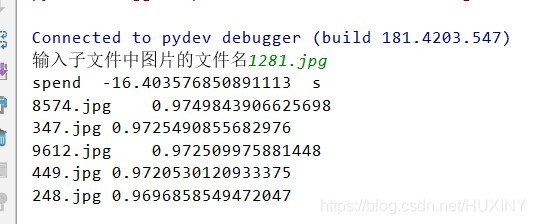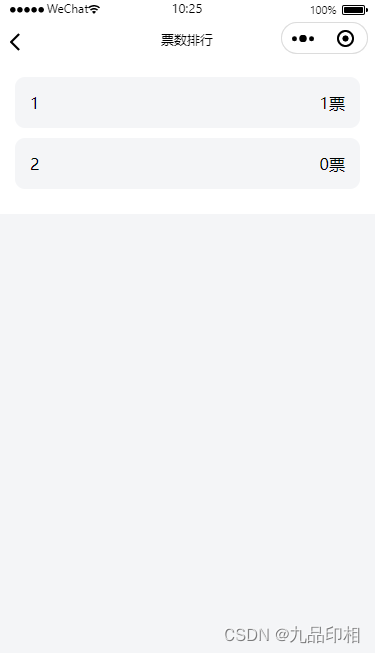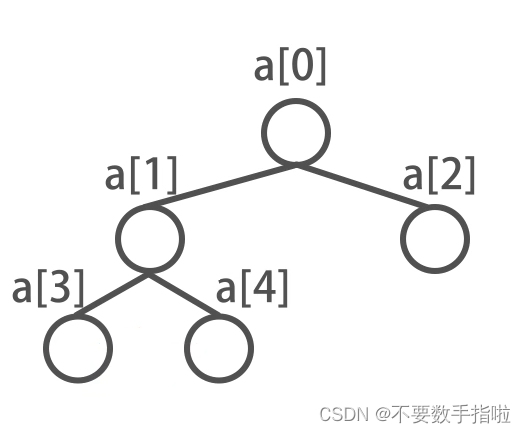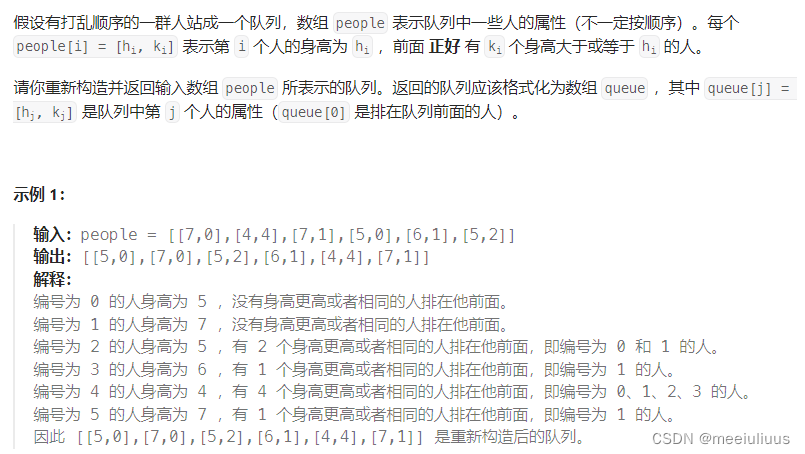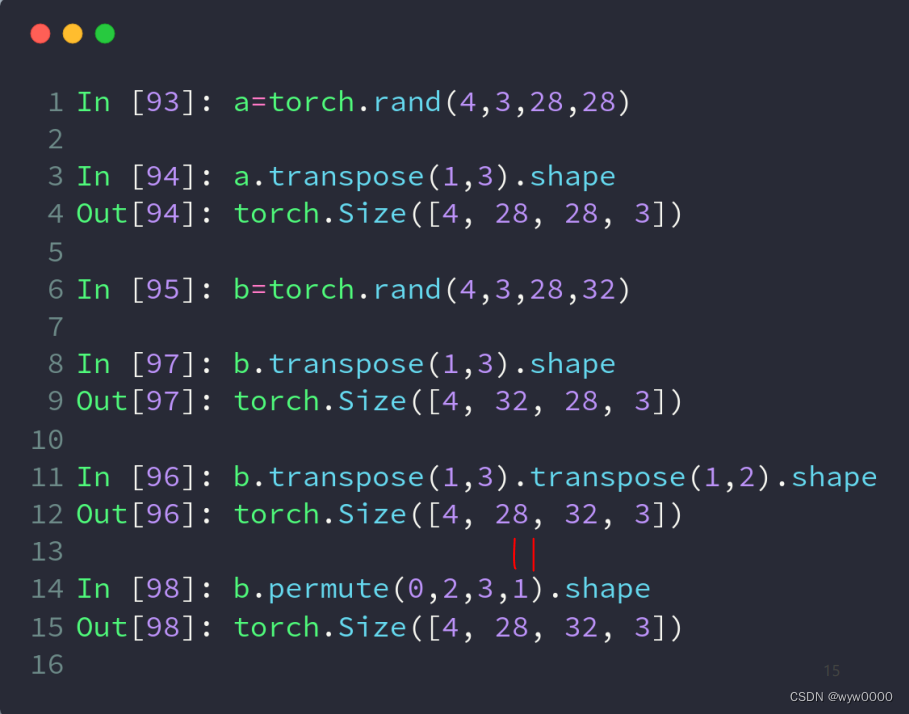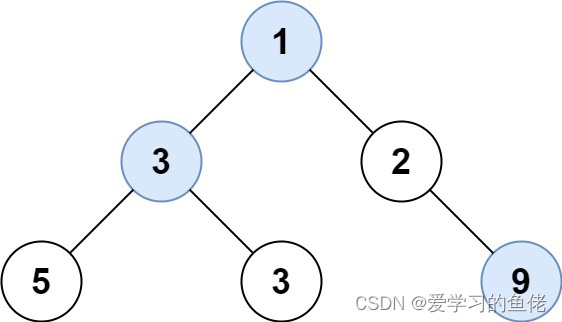《剑指Offer》笔记&题解&思路&技巧&优化_Part_2
- 😍😍😍 相知
- 🙌🙌🙌 相识
- 🍓🍓🍓广度优先搜索BFS
- 🍓🍓🍓深度优先搜索DFS
- 😢😢😢 开始刷题
- 1. LCR 129. 字母迷宫——矩阵中的路径
- 2. LCR 130. 衣橱整理——机器人的运动范围
- 3. LCR 131. 砍竹子 I——剪绳子I
- 4. LCR 132. 砍竹子 II——剪绳子II
- 5. LCR 133. 位 1 的个数——二进制中1的个数
- 6. LCR 134. Pow(x, n)——数值的整数次方
- 7. LCR 135. 报数——打印从1到最大的n位数
- 8. LCR 136. 删除链表的节点——删除链表的节点
- 9. LCR 137. 模糊搜索验证——正则表达式匹配

😍😍😍 相知
当你踏入计算机科学的大门,或许会感到一片新奇而陌生的领域,尤其是对于那些非科班出身的学子而言。作为一位非科班研二学生,我深知学习的道路可能会充满挑战,让我们愿意迎接这段充满可能性的旅程。
最近,我开始了学习
《剑指Offer》和Java编程的探索之旅。这不仅是一次对计算机科学的深入了解,更是对自己学术生涯的一次扩展。或许,这一切刚刚开始,但我深信,通过努力与坚持,我能够逐渐驾驭这门技艺。在这个博客中,我将深入剖析
《剑指Offer》中的问题,并结合Java编程语言进行解析。让我们一起踏上这段学习之旅,共同奋斗,共同成长。无论你是已经驾轻就熟的Java高手,还是像我一样初出茅庐的学子,我们都能在这里找到彼此的支持与激励。让我们携手前行,共同迎接知识的挑战,为自己的未来打下坚实的基石。
这是我上一篇博客的,也希望大家多多关注!
- 《剑指Offer》笔记&题解&思路&技巧&优化 Java版本——新版leetcode_Part_1
🙌🙌🙌 相识
根据题型可将其分为这样几种类型:
- 结构概念类(数组,链表,栈,堆,队列,树)
- 搜索遍历类(深度优先搜索,广度优先搜索,二分遍历)
- 双指针定位类(快慢指针,指针碰撞,滑动窗口)
- 排序类(快速排序,归并排序)
- 数学推理类(动态规划,数学)
🍓🍓🍓广度优先搜索BFS
- 选定一个结点访问
- 访问完后入队
- 依次访问已选结点相关联的其他结点并入队
- 依次访问队中其他结点,访问完所有相关联结点后出队
- 所有结点访问完成



树——谁出来,放谁的子节点进去!
对于图来说!

图没有根节点,我们从任意一个节点出发!

🍓🍓🍓深度优先搜索DFS

利用栈
😢😢😢 开始刷题
1. LCR 129. 字母迷宫——矩阵中的路径
题目跳转:https://leetcode.cn/problems/ju-zhen-zhong-de-lu-jing-lcof/description/

class Solution {public boolean wordPuzzle(char[][] grid, String target) {if(grid.length*grid[0].length< target.length())return false;boolean[][] visited = new boolean[grid.length][grid[0].length];for(int i = 0;i<grid.length;i++){for(int j =0;j<grid[i].length;j++){if(dfs(grid,i,j,target,0)) return true;}}return false;}public boolean dfs(char[][] grid,int i,int j,String target,int k){if(i<0||i>=grid.length||j<0||j>=grid[i].length||grid[i][j] != target.charAt(k)){return false;}if(k == target.length()-1)return true;grid[i][j] = '1';boolean res = dfs(grid,i,j+1,target,k+1)||dfs(grid,i+1,j,target,k+1)||dfs(grid,i,j-1,target,k+1)||dfs(grid,i-1,j,target,k+1);grid[i][j] = target.charAt(k);return res;}
}
2. LCR 130. 衣橱整理——机器人的运动范围
题目跳转:https://leetcode.cn/problems/ji-qi-ren-de-yun-dong-fan-wei-lcof/description/
补充说明如下:
digit(x),表示数字 x 的个十百千…位数字之和,比如 digit(726) = 7 + 2 + 6 = 15
允许向下或向右移动一格,不允许跨过格子,如果向下向右的格子均不可整理,则不能继续向下向右移动,返回 [0][0] 坐标;
一次移动到尽头后,可以返回 [0][0] 位置,沿着一条新路径开始整理;
- 举例1:
一个 4 x 7 的矩阵,cnt 为 5,
则可整理的格子如下,y 表示可整理,n 表示不可整理:
| \、 | 0 | 1 | 2 | 3 | 4 | 5 | 6 |
|---|---|---|---|---|---|---|---|
| 0 | y | y | y | y | y | y | n |
| 1 | y | y | y | y | y | n | n |
| 2 | y | y | y | y | n | n | n |
| 3 | y | y | y | n | n | n | n |
digit(0) + digit(6) = 0 + 6 = 6 > cnt (cnt为5),所以不可整理,以此类推。
所以可整理格子数量总计为 18 格。
- 举例2:
一个 4 x 11 的矩阵,cnt 为 2,
则可整理的格子如下,y 表示可整理,n 表示不可整理:
| | | 0 | 1 | 2 | 3 | 4 | 5 | 6 | 7 | 8 | 9 | 10 |
|---|---|---|---|---|---|---|---|---|---|---|---|
| 0 | y | y | y | n | n | n | n | n | n | n | n |
| 1 | y | y | n | n | n | n | n | n | n | n | n |
| 2 | y | n | n | n | n | n | n | n | n | n | n |
| 3 | n | n | n | n | n | n | n | n | n | n | n |
digit(0) + digit(10) = 0 + 1+0 = 1 < cnt (cnt为2),虽然满足digit要求,但没有可达的路径,
一次只能向下、向右移动一格,不能跨格子,所以[0][10]也不可整理。
所以可整理格子数量总计为 6 格。
class Solution {public int wardrobeFinishing(int m, int n, int cnt) {boolean[][] visited = new boolean[m][n];return dfs(0, 0, m, n, cnt, visited);}int dfs(int i, int j, int m, int n, int k, boolean visited[][]) {if (i < 0 || i >= m || j < 0 || j >= n || (i/10 + i%10 + j/10 + j%10) > k || visited[i][j]) {return 0;}visited[i][j] = true;return dfs(i + 1, j, m, n, k, visited) + dfs(i - 1, j, m, n, k, visited) + dfs(i, j + 1, m, n, k, visited) + dfs(i, j - 1, m, n, k, visited) + 1;}
}
3. LCR 131. 砍竹子 I——剪绳子I
题目跳转:https://leetcode.cn/problems/jian-sheng-zi-lcof/description/

class Solution {public int cuttingBamboo(int bamboo_len) {// n<=3的情况,m>1必须要分段,例如:3必须分成1、2;1、1、1 ,n=3最大分段乘积是2, 同理2的最大乘积为1if (bamboo_len==1 || bamboo_len== 2)return 1;if (bamboo_len == 3)return 2;int sum = 1;while(bamboo_len>4){sum *=3;bamboo_len -=3;}return sum*bamboo_len;}
}

class Solution {public int cuttingRope(int bamboo_len) {int[] dp = new int[bamboo_len + 1];for (int i = 2; i <= bamboo_len; i++) {int curMax = 0;for (int j = 1; j < i; j++) {curMax = Math.max(curMax, Math.max(j * (i - j), j * dp[i - j]));}dp[i] = curMax;}return dp[bamboo_len];}
}
4. LCR 132. 砍竹子 II——剪绳子II
题目跳转:https://leetcode.cn/problems/jian-sheng-zi-ii-lcof/description/
贪心算法:
class Solution {public int cuttingBamboo(int bamboo_len) {if (bamboo_len==1 || bamboo_len== 2)return 1;if (bamboo_len == 3)return 2;long res = 1;while(bamboo_len>4){res *=3;res = res%1000000007;bamboo_len -=3;}return (int)(res*bamboo_len%1000000007);}
}
动态规划+大数:
import java.math.BigInteger;class Solution {public int cuttingRope(int n) {BigInteger dp[] = new BigInteger[n + 1];Arrays.fill(dp, BigInteger.valueOf(1));for (int i = 3; i <= n; i++) {for (int j = 1; j < i; j++) {dp[i] = dp[i].max(BigInteger.valueOf(j * (i - j))).max(dp[i - j].multiply(BigInteger.valueOf(j)));}}return dp[n].mod(BigInteger.valueOf(1000000007)).intValue();}
}
5. LCR 133. 位 1 的个数——二进制中1的个数
题目跳转:https://leetcode.cn/problems/er-jin-zhi-zhong-1de-ge-shu-lcof/description/
学个小小函数:
public class Solution {// you need to treat n as an unsigned valuepublic int hammingWeight(int n) {return Integer.bitCount(n);}
}
public int hammingWeight(int n) {String s = Integer.toBinaryString(n);int count = 0;for (int i = 0; i < s.length(); i++){if (s.charAt(i) == '1')count++;}return count;
}

- 异或运算的性质?
- 运算规则:相同为0,不同为1
- N^0= N
- N^N=0
- a^b=b^a
- a^(b^C) = (a^b)^c

把一个整数减去1,再和原整数做与运算,会把该整数最右边一个1变成0.那么一个整数的二进制有多少个1,就可以进行多少次这样的操作。
public class Solution {// you need to treat n as an unsigned valuepublic int hammingWeight(int n) {int count=0;while(n!=0){n=n&(n-1);count++;}return count;}
}
6. LCR 134. Pow(x, n)——数值的整数次方
题目跳转:https://leetcode.cn/problems/shu-zhi-de-zheng-shu-ci-fang-lcof/description/
首先主打一个叛逆!但是你真这么写 别逼我删你 我们主要是熟悉函数!
class Solution {public double myPow(double x, int n) {return Math.pow(x,n);}
}
class Solution {public double myPow(double x, int n) {if(n==0)return 1;if(n==1)return x;if(n==-1)return 1/x;double half = myPow(x, n / 2);double mod = myPow(x, n % 2);return half * half * mod;}
}
7. LCR 135. 报数——打印从1到最大的n位数
题目跳转:https://leetcode.cn/problems/da-yin-cong-1dao-zui-da-de-nwei-shu-lcof/description/
class Solution {public int[] countNumbers(int cnt) {int[] temp = new int[(int)Math.pow(10,cnt)-1];for(int i = 0;i < temp.length;i++){temp[i] = i+1;}return temp;}
}
要是考虑大数!!
class Solution {StringBuilder res;int count = 0, cnt;char[] num, loop = {'0', '1', '2', '3', '4', '5', '6', '7', '8', '9'};public String countNumbers(int cnt) {this.cnt = cnt;res = new StringBuilder(); // 数字字符串集num = new char[cnt]; // 定义长度为 cnt 的字符列表dfs(0); // 开启全排列递归res.deleteCharAt(res.length() - 1); // 删除最后多余的逗号return res.toString(); // 转化为字符串并返回}void dfs(int x) {if(x == cnt) { // 终止条件:已固定完所有位res.append(String.valueOf(num) + ","); // 拼接 num 并添加至 res 尾部,使用逗号隔开return;}for(char i : loop) { // 遍历 ‘0‘ - ’9‘num[x] = i; // 固定第 x 位为 idfs(x + 1); // 开启固定第 x + 1 位}}
}8. LCR 136. 删除链表的节点——删除链表的节点
题目跳转:https://leetcode.cn/problems/shan-chu-lian-biao-de-jie-dian-lcof/description/
/*** Definition for singly-linked list.* public class ListNode {* int val;* ListNode next;* ListNode(int x) { val = x; }* }*/
class Solution {public ListNode deleteNode(ListNode head, int val) {if(head.val==val) return head.next;ListNode result = head;while(head.next!=null){if(head.next.val == val ){head.next = head.next.next;break;}head = head.next;}return result;}
}
9. LCR 137. 模糊搜索验证——正则表达式匹配
题目跳转:https://leetcode.cn/problems/zheng-ze-biao-da-shi-pi-pei-lcof/description/
题目中的模糊搜索验证是指一个「逐步匹配」的过程:我们每次从字符串 p p p 中取出一个字符或者「字符 + 星号」的组合,并在 s s s中进行匹配。对于 p p p 中一个字符而言,它只能在 s s s 中匹配一个字符,匹配的方法具有唯一性;而对于 p p p 中字符 + 星号的组合而言,它可以在 s s s中匹配任意自然数个字符,并不具有唯一性。因此我们可以考虑使用动态规划,对匹配的方案进行枚举。
我们用 f [ i ] [ j ] f[i][j] f[i][j] 表示 s s s 的前 i i i 个字符与 p p p 中的前 j j j 个字符是否能够匹配。在进行状态转移时,我们考虑 p p p 的第 j j j 个字符的匹配情况:
如果 p p p 的第 j j j 个字符是一个小写字母,那么我们必须在 s s s 中匹配一个相同的小写字母,即
f [ i ] [ j ] = { f [ i − 1 ] [ j − 1 ] s [ i ] = p [ j ] false s [ i ] ≠ p [ j ] f[i][j]=\left\{ \begin{matrix} f[i-1][j-1] & s[i]=p[j] \\ \text{false } & s[i]\ne p[j] \\ \end{matrix} \right. f[i][j]={f[i−1][j−1]false s[i]=p[j]s[i]=p[j]
也就是说,如果 s s s 的第 i i i 个字符与 p p p 的第 j j j 个字符不相同,那么无法进行匹配;否则我们可以匹配两个字符串的最后一个字符,完整的匹配结果取决于两个字符串前面的部分。
如果 p p p 的第 j j j 个字符是 ∗ * ∗,那么就表示我们可以对 p p p 的第 j − 1 j-1 j−1 个字符匹配任意自然数次。在匹配 0 0 0 次的情况下,我们有
f [ i ] [ j ] = f [ i ] [ j − 2 ] f[i][j]=f[i][j−2] f[i][j]=f[i][j−2]
也就是我们「浪费」了一个字符 + 星号的组合,没有匹配任何 s s s 中的字符。
在匹配 1,2,3,⋯1,2,3, \cdots1,2,3,⋯ 次的情况下,类似地我们有
f [ i ] [ j ] = f [ i − 1 ] [ j − 2 ] , if s [ i ] = p [ j − 1 ] f [ i ] [ j ] = f [ i − 2 ] [ j − 2 ] , if s [ i − 1 ] = s [ i ] = p [ j − 1 ] f [ i ] [ j ] = f [ i − 3 ] [ j − 2 ] , if s [ i − 2 ] = s [ i − 1 ] = s [ i ] = p [ j − 1 ] ⋯ ⋯ \begin{aligned} & f[i][j] = f[i - 1][j - 2], \quad && \text{if~} s[i] = p[j - 1] \\ & f[i][j] = f[i - 2][j - 2], \quad && \text{if~} s[i - 1] = s[i] = p[j - 1] \\ & f[i][j] = f[i - 3][j - 2], \quad && \text{if~} s[i - 2] = s[i - 1] = s[i] = p[j - 1] \\ & \cdots\cdots & \end{aligned} f[i][j]=f[i−1][j−2],f[i][j]=f[i−2][j−2],f[i][j]=f[i−3][j−2],⋯⋯if s[i]=p[j−1]if s[i−1]=s[i]=p[j−1]if s[i−2]=s[i−1]=s[i]=p[j−1]
如果我们通过这种方法进行转移,那么我们就需要枚举这个组合到底匹配了 s s s 中的几个字符,会增导致时间复杂度增加,并且代码编写起来十分麻烦。我们不妨换个角度考虑这个问题:字母 + 星号的组合在匹配的过程中,本质上只会有两种情况:
匹配 s s s 末尾的一个字符,将该字符扔掉,而该组合还可以继续进行匹配;
不匹配字符,将该组合扔掉,不再进行匹配。
如果按照这个角度进行思考,我们可以写出很精巧的状态转移方程:
f [ i ] [ j ] = { f [ i − 1 ] [ j ] or f [ i ] [ j − 2 ] , s [ i ] = p [ j − 1 ] f [ i ] [ j − 2 ] , s [ i ] ≠ p [ j − 1 ] f[i][j] = \begin{cases} f[i - 1][j] \text{~or~} f[i][j - 2], & s[i] = p[j - 1] \\ f[i][j - 2], & s[i] \neq p[j - 1] \end{cases} f[i][j]={f[i−1][j] or f[i][j−2],f[i][j−2],s[i]=p[j−1]s[i]=p[j−1]
在任意情况下,只要 p [ j ] p[j] p[j]是 . . .,那么 p [ j ] p[j] p[j] 一定成功匹配 s s s中的任意一个小写字母。
最终的状态转移方程如下:
f [ i ] [ j ] = { if ( p [ j ] ≠ ‘*’ ) = { f [ i − 1 ] [ j − 1 ] , matches ( s [ i ] , p [ j ] ) false , otherwise otherwise = { f [ i − 1 ] [ j ] or f [ i ] [ j − 2 ] , matches ( s [ i ] , p [ j − 1 ] ) f [ i ] [ j − 2 ] , otherwise f[i][j] = \begin{cases} \text{if~} (p[j] \neq \text{~`*'}) = \begin{cases} f[i - 1][j - 1], & \textit{matches}(s[i], p[j])\\ \text{false}, & \text{otherwise} \end{cases} \\ \text{otherwise} = \begin{cases} f[i - 1][j] \text{~or~} f[i][j - 2], & \textit{matches}(s[i], p[j-1]) \\ f[i][j - 2], & \text{otherwise} \end{cases} \end{cases} f[i][j]=⎩ ⎨ ⎧if (p[j]= ‘*’)={f[i−1][j−1],false,matches(s[i],p[j])otherwiseotherwise={f[i−1][j] or f[i][j−2],f[i][j−2],matches(s[i],p[j−1])otherwise
其中 matches ( x , y ) \textit{matches}(x, y) matches(x,y) 判断两个字符是否匹配的辅助函数。只有当 y y y 是 . . . 或者 x x x 和 y y y 本身相同时,这两个字符才会匹配。
细节
动态规划的边界条件为 f [ 0 ] [ 0 ] = true f[0][0] = \text{true} f[0][0]=true,即两个空字符串是可以匹配的。最终的答案即为 f [ m ] [ n ] f[m][n] f[m][n],其中 m m m 和 n n n 分别是字符串 s s s 和 p p p 的长度。由于大部分语言中,字符串的字符下标是从 0 0 0 开始的,因此在实现上面的状态转移方程时,需要注意状态中每一维下标与实际字符下标的对应关系。
在上面的状态转移方程中,如果字符串 p p p 中包含一个「字符 + 星号」的组合(例如 a ∗ a* a∗),那么在进行状态转移时,会先将 a a a 进行匹配(当 p [ j ] p[j] p[j] 为 a a a 时),再将 a ∗ a* a∗ 作为整体进行匹配(当 ] p [ j ] ]p[j] ]p[j] 为 ∗ * ∗ 时)。然而,在题目描述中,我们必须将 a ∗ a* a∗ 看成一个整体,因此将 a a a 进行匹配是不符合题目要求的。看来我们进行了额外的状态转移,这样会对最终的答案产生影响吗?这个问题留给读者进行思考。
class Solution {public boolean isMatch(String s, String p) {int m = s.length();int n = p.length();boolean[][] f = new boolean[m + 1][n + 1];f[0][0] = true;for (int i = 0; i <= m; ++i) {for (int j = 1; j <= n; ++j) {if (p.charAt(j - 1) == '*') {f[i][j] = f[i][j - 2];if (matches(s, p, i, j - 1)) {f[i][j] = f[i][j] || f[i - 1][j];}} else {if (matches(s, p, i, j)) {f[i][j] = f[i - 1][j - 1];}}}}return f[m][n];}public boolean matches(String s, String p, int i, int j) {if (i == 0) {return false;}if (p.charAt(j - 1) == '.') {return true;}return s.charAt(i - 1) == p.charAt(j - 1);}
}

